Gallery
Donald G. Longcrier, Selected work.
Donald G. Longcrier is an artist producing paintings, sculpture, and installation work in a variety of scales and materials.
My work springs from a longtime interest in the contemplative life in both Western and Eastern traditions. I work with materials that are familiar to me: rope, wood, beeswax, carpenter’s tools, and fishing tackle
COPYRIGHT © 2010, DONALD G LONGCRIER. ALL RIGHTS RESERVED.








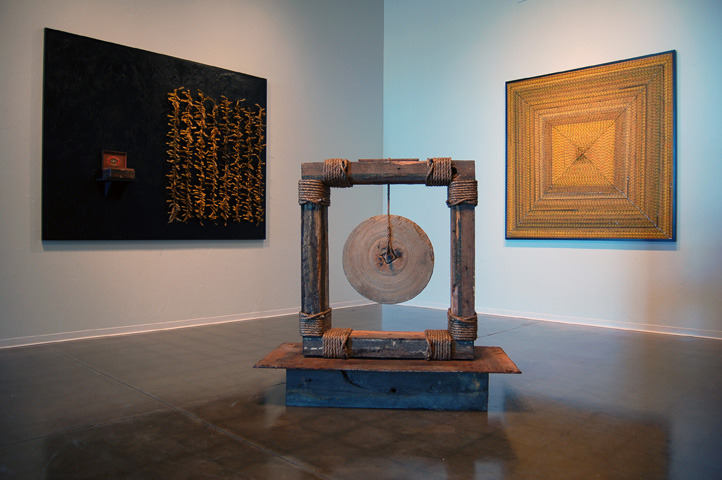
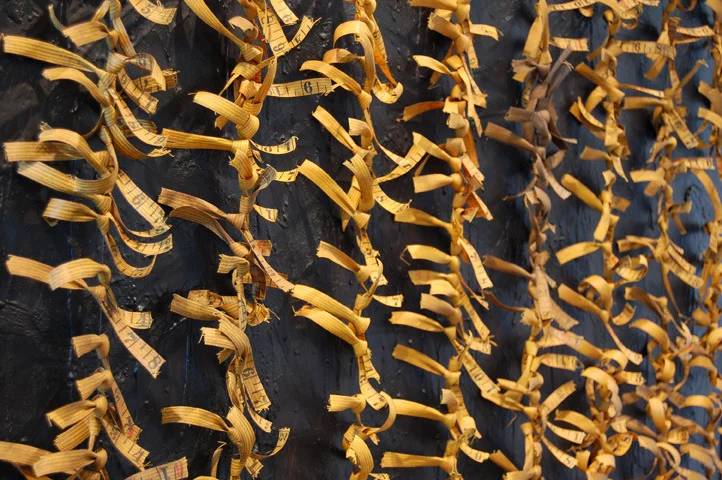








Wooden Fish by Donald Longcrier
Wooden Fish by Donald G. Longcrier, Mainsite Contemporary Art, Norman, OK, Oct-Nov 2013, Installation view. ©2013
The wooden fish is a simple percussion instrument used in some Buddhist traditions to maintain a rhythm while reciting sutras and Buddhist scriptures. Originally a large, carved fish found hanging outside temples along with the bell and gong; it was used to call monks to their assigned duties. The fish in Buddhist tradition never sleeps and therefore symbolizes wakefulness.
My work springs from a longtime interest in the contemplative life in both Western and Eastern traditions. I work with materials that are familiar to me: rope, wood, beeswax, carpenter’s tools, and fishing tackle. Individual pieces are quiet. Objects are presented in the simplest possible way, without embellishment or decoration. The results are intended to be humble and contemplative.
Photography by Brett Deering
COPYRIGHT © 2010, DONALD G LONGCRIER. ALL RIGHTS RESERVED.






















Art Now 2012, City Arts Center
Art Now 2012 by Donald G. Longcrier, Oklahoma Contemporary Arts Center (formerly City Arts Center), Oklahoma City, OK
COPYRIGHT © 2010, DONALD G LONGCRIER. ALL RIGHTS RESERVED.









Donald G. Longcrier, City Arts Center
Donald G. Longcrier, Oklahoma Contemporary Arts Center (formerly City Arts Center), Nov-Dec 2009,
The work on exhibit here grew out of ideas that I have been thinking about and that interest me. I don't think it is important that the viewer be concerned with what those interests are or where the specific ideas came from. I know it is not necessary for someone to have that information to participate in a visual dialogue with the work.
Paraphrasing Samuel Beckett's famous quote about Finnegans Wake, [it] is not about something. It is that something itself*. I would caution the viewer not to spend too much time trying to understand what the work in this exhibition is about, but rather, look at what it is.
I work with materials that are familiar to me; rope, wood, beeswax, carpenter's tools, and fishing tackle. Individual pieces are often quiet. Everything is simple. Objects are presented in the simplest possible way, without embellishment, or decoration. These are humble pieces and there is no pretense or attempt at anything profound.
Artworks in this exhibition, like most of my works, are untitled. Titles are eliminated to avoid confusion, attempts at cleverness, or wordplay. Parenthetical titles are used for the purpose of helping me keep track of various works. Objects described in the titles may or may not be accurately named, but describe the individual piece to me.
The late Nobel Prize winning physicist, Richard Feynman, told a story of his youth at camps in the Catskills. The fathers of the children would visit on the weekends, and all the fathers would hike the trails teaching their children the name of this bird or that bird. On Mondays, the children would ask Feynman, "What kind of bird is that?" He would answer, "I haven't the slightest idea." So the kids would say his father did not tell him anything. "But it was the opposite" his father "had "taught him. His father would look at a bird and say, "Do you know what kind of bird that is? It's a brown throated thrush; but in Portuguese it's a ____, in Japanese it's a ____, in Italian it's a ____, etcetera. Now," his father says" you know in all the languages …what the name of that bird is and …you'll know absolutely nothing whatever about the bird. You only know about humans in different places and what they call the bird. Now" says Feynman's father, "let's look at the bird."**
I believe we are all capable of learning something if we look at the bird.
Photography by Hal Cantwell
COPYRIGHT © 2010, DONALD G LONGCRIER. ALL RIGHTS RESERVED.


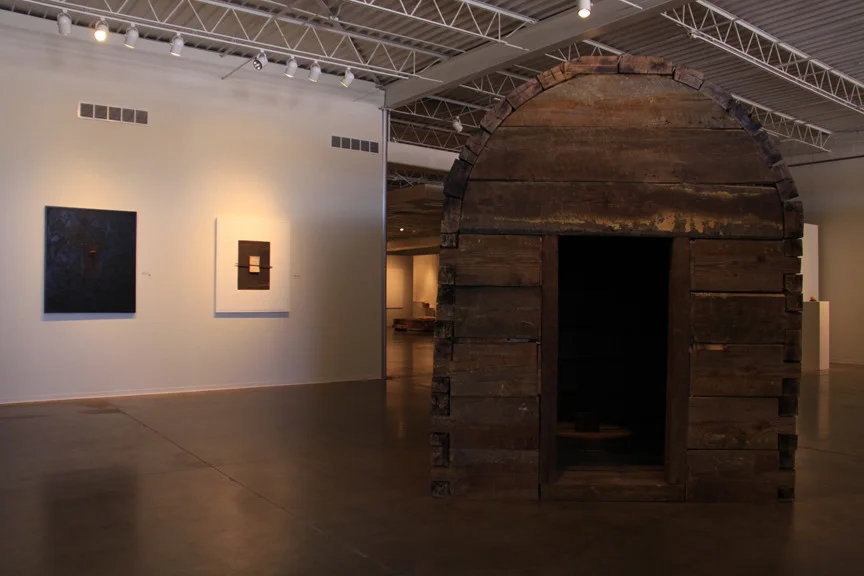















Native Trout of the American West
Native Trout of the American West by Donald G. Longcrier, Nona Jean Hulsey Gallery, Oklahoma City University, Nov-Dec 2007
Someone asked me once, "What the hell are you doing in an exhibition of Western Art?" I think the answer to that question lies at the heart of the paintings exhibited here.
These paintings represent a discussion of some of the West's most pressing contemporary issues, the first and foremost of which, will always be water and its management. One cannot speak about the West without discussing public land and private ownership, environmental and economic concerns such as mining and farming arid land.
The native trout species I have chosen to paint were once common to most rivers and streams from the Pacific Ocean to the Rockies, from Mexico to Canada. Now, they number a fraction of their original population and many are only found inhabiting tiny, isolated headwater streams in small areas of their original range. Where some of these fish once grew to legendary size--Lahontan cutthroat trout were reported to reach sixty pounds--many now survive as six to ten inch specimens.
Wild, native trout populations are indicative of the environment in which they live, and reflect the choices we have made and will be making regarding the use of these watersheds. Native trout habitat has been affected by grazing, farming, and irrigation needs. Blocked by dams, spawning runs have ceased. Many native species have been displaced by the introduction of non-native species.
Fortunately, recovery efforts supported by, private organizations, government, and tribal agencies are underway throughout the region.
A simpler explanation of the paintings might have to do with the fact that research for the work requires me to spend as much time as possible, chasing after wild native fish in remote but beautiful locations. Regrettably, the time spent on research is never enough. But, fishing is all about hope
COPYRIGHT © 2010, DONALD G LONGCRIER. ALL RIGHTS RESERVED.
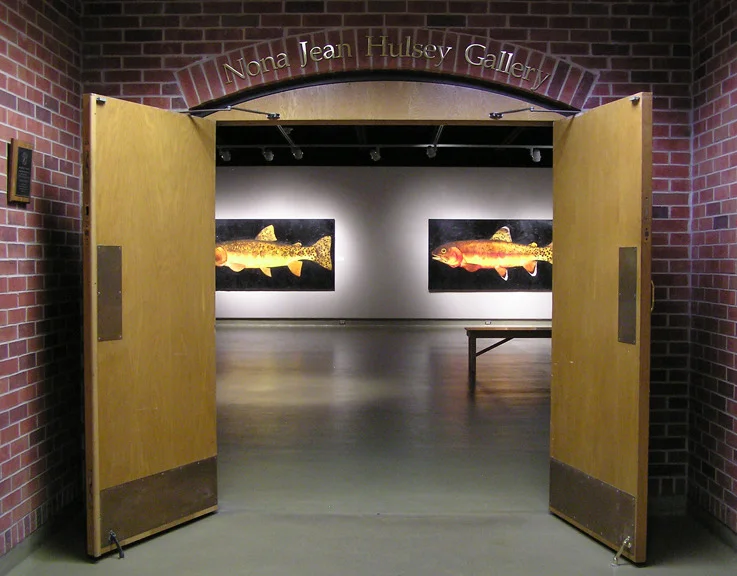



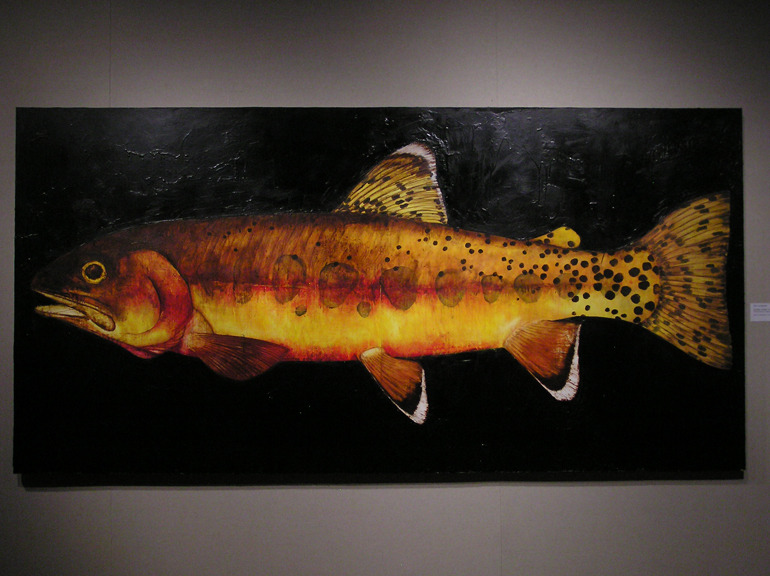




Facing the Desert, [Artspace] at Untitled
Facing the Desert by Donald G. Longcrier, [Artspace] at Untitled (formerly Untitled Artspace), Oklahoma City, OK, Feb-Mar 2002
In “The Silent Life”, Thomas Merton states that “the monastic horizon is clearly the horizon of the desert…His [the monk’s] eyes are not turned towards the battlefields in the plain [rather] they gaze out upon the desert…”
The work exhibited here grew out of an interest in the contemplative life of monks, from both eastern and western religious traditions. It is simple, plain, and sometimes mysterious. Rather than attempting to illustrate ascetic principles and the monastic ideal, found objects are assembled and presented in a very simple way using materials and tools familiar to me; rope, wood, beeswax, measuring tape, and carpenter’s chalk.
Photography by Ann Sherman
COPYRIGHT © 2010, DONALD G LONGCRIER. ALL RIGHTS RESERVED.

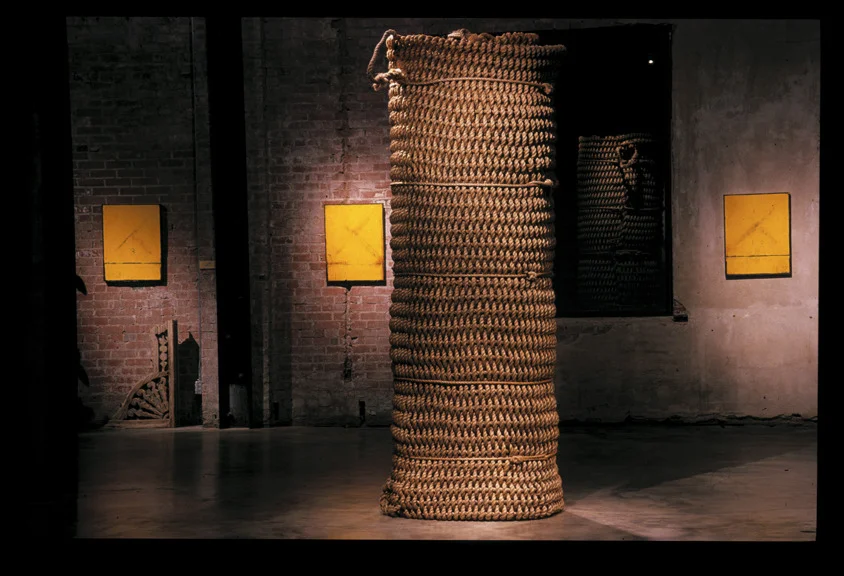

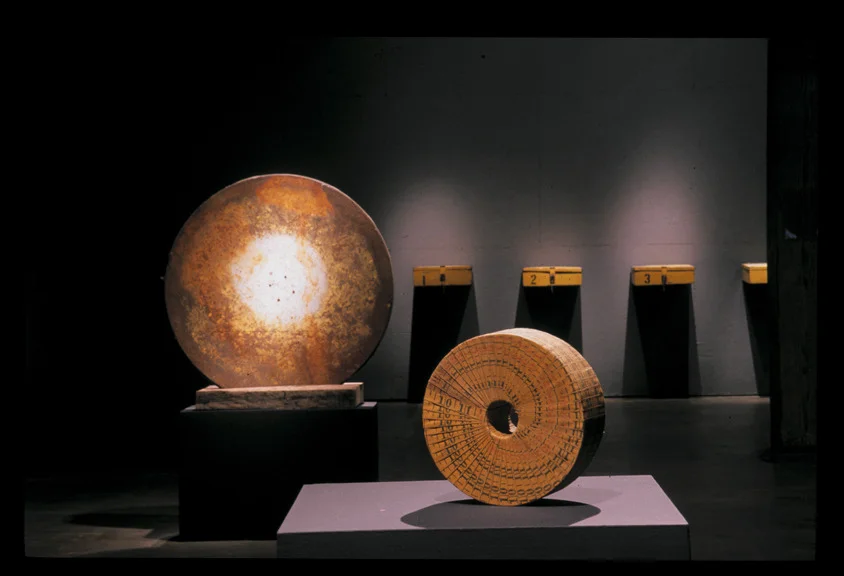





Yellow Boxes and Other Allegories
Yellow Boxes and Other Allegories by Donald G. Longcrier, Living Arts of Tulsa, Tulsa, OK, March 1996
Yellow Boxes and Other Allegories was installed at Living Arts of Tulsa during the month of March 1996. The sculptures are constructed from found objects and assembled and presented in the simplest possible way avoiding distracting decoration and excess manipulation by the artsit.
The intended purpose or past use of the object may not be important to the creation or understanding of the work. Allegorical readings are an accepted consequence of removing an object from its original context and placing it in the context of sculpture. In the introduction to her translation of the Divine Comedy Inferno, Dorothy Sayers defines allegory as experience transformed into image.
Individual works are untitled to eliminate cleverness and wordplay. Parenthetical titles provide a point of reference for the artist and are not necessarily accurate descriptions of the objects.
COPYRIGHT © 2010, DONALD G LONGCRIER. ALL RIGHTS RESERVED.









Oklahoma City Museum of Art 1995
New Work by Donald G. Longcrier, Oklahoma City Museum of Art, 1995
COPYRIGHT © 2010, DONALD G LONGCRIER. ALL RIGHTS RESERVED.





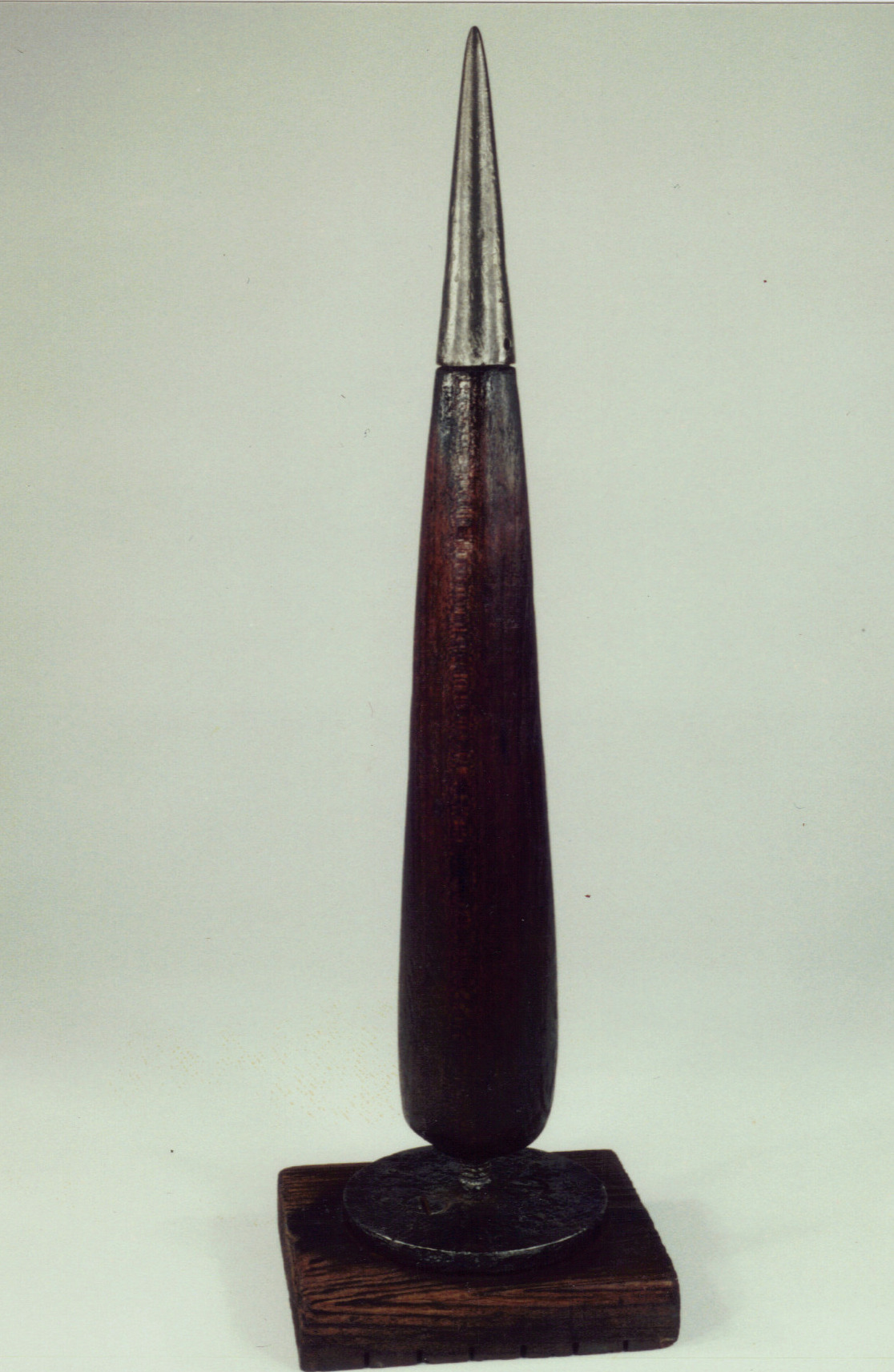
Building 403
Building 403 Project by Donald G. Longcrier, Swearingen Research Park, University of Oklahoma, Norman, OK, 1994
Building 403 was a site-specific work created during early 1994 for a condemned World War II-era warehouse on the University of Oklahoma's Max Westheimer Airport and Swearingen Research Park. The structure (approximately 137’ long X 55’ wide) ran southwest to northeast and was designed with an open interior space with support piers dividing the space into 8’ by 10’ “cells.” Its previous tenant stored thirty years of salvaged goods before vacating the premises in late fall 1993, leaving behind heaps of trash and discarded junk. Airpark management allowed me to use the building and any materials within for the work. All materials with the exception of the Rope Nets and their hanging devices and the Bridge Timbers were found on site. All writing, marking, and painting were extant; and the only modification consisted of cleaning the south end of trash and removing two lights where the nets would hang. Slated for demolition and salvage, Building 403 was without electric power and light, heat or water. Available natural light was controlled by opening and closing various combinations of bay doors to admit daylight and reflect light from the walls of an adjacent building.
Upon entering the warehouse from the loading dock, the installation was accessible through an opening in a chain link fence divider. Five large rope columns dominated the eastern two-fifths of the space, creating the Net Gallery. Because the nets were hung two to four inches above the floor in direct line with the support piers, rotation was allowed and relative mass was made apparent by the wind-induced movement of the smaller nets and its lack of effect on the two larger bodies. Walls and piers (labeled A, B, C, D, and 1-5 by the previous occupant) described and 8’ by 10’ “cell” or “station” on either side of each net. The regular intervals of nails that patterned the walls together with the repetitive weave of the nets implied a movement or progression from station to station and a return on the opposite side.
The Bridge Timbers bisected the space, provided a communal gathering place and with the Steel Bars denied the most obvious implications of the “E” wall and its protrusion into the room. Steel rectangles (4” H. X 30” L.) driven between the board of the floor decking prevented access to the central wall and yet were a reminder of the participation of the building structure. Holes in the western floor area corresponded to gaps in the roof and interrupted the system of cells. The Stage Light Fixture (24” H. X 180” L. X 8” D.) andTape Rolls (9” H. X 60” W. X 36” D.) placed the viewer in a more personal space, the former turned away from the installation and the latter quietly placed to review previous or potential positions.
Building 403 was completed the last week of February 1994 and available to viewers during the increasing daylight hours of March and early April after which the objects were removed and the building vacated. According to plans, clean up and salvage operations began on the site in the fall of 1994 in preparation for razing the structure.
I would like to thank George Hargett and Ann Summers whose cooperation and support at Max Westheimer Airpark and Swearingen Research Park was essential in the completion of this project. All photographs are courtesy of Hal Cantwell.
COPYRIGHT © 2010, DONALD G LONGCRIER. ALL RIGHTS RESERVED.






Fred Jones Jr. Museum of Art
Untitled (Rope Nets and Bridge Timbers) by Donald G. Longcrier, Fred Jones Jr. Museum of Art, University of Oklahoma, Norman, OK 1994
Untitled ( Rope Nets and Bridge Timbers) was exhibited at the Fred Jones Jr. Museum of Art during the months of April and May 1994. The piece consisted of found objects and was installed installed in the lower-level, western gallery of the museum.
The Rope Nets are 1"-1.5" diameter hemp rope approximately 118" high and range in width from 72" to 132". The Bridge Timbers are stacked to form two benches/rails/dividers approximately 25" H x 180" W x 15" D. each, and are placed 108" in front of the "Net Wall".
Visitors to the museum were able to experience Untitled (Rope Nets and Bridge Timbers) as a part of the installation or by viewing the sculpture from the open terrace of the museum's ground floor. The timbers created both a physical and a behavioral barrier for the viewer. Visitors could enter the space from the center gap or approach from the edges. Interaction within the space defined by the timbers to the wall was more intimate and confined. The viewer was gently pushed toward the wall by the bench/rail and confronted by the mass, texture, workmanship and "oily" smell of the nets. Almost everyone wanted to participate in the piece tactilely.
Outside the barriers, the interaction was more reverential with viewers quietly experiencing the piece as a whole. From the terrace viewers could experience the participation of the work with the architecture of the building and observe the behavior of visitors within the space.
COPYRIGHT © 2010, DONALD G LONGCRIER. ALL RIGHTS RESERVED.




IAO Individual Artists of Oklahoma
Donald G. Longcrier, Individual Artists of Oklahoma IAO Artspace, Oklahoma City, OK, 1993
COPYRIGHT © 2010, DONALD G LONGCRIER. ALL RIGHTS RESERVED.









The Trout Drawings
The Trout Drawings/Paintings refer to scientific illustrations and specimen drawings used for taxonomic identification used in common practice in fisheries biology and angling literature. Representative individuals are presented facing left referring to the fact that measurements are taken along one side and illustrate basic morphological characteristics of the species (or subspecies in many cases). Brighter colored specimens are males shown in spawning colors.
Whereas the genesis for the trout drawings and the larger encaustic trout paintings can be traced to my studies in zoology and early work in fisheries biology, my interest in trout in particular, and fish in general, can be directly attributed to an interest in fly fishing and my subsequent environmental work related to clean water.
The majority of the smaller trout drawings have been sold to raise funds to support the 89er Chapter of Trout Unlimited and the organization's efforts to protect, restore, and enhance the cold-water fisheries of Southeastern and Eastern Oklahoma. Information on the the work of the 89er Chapter of Trout Unlimited may be found on the chapter website: www.89ertu.org
Recently, several trout drawings have been sold to help fund the work of Reel Recovery, a national, non-profit organization that provides fly fishing retreats for men diagnosed with cancer. Information on the work of Reel Recovery may be found at: www.reelrecovery.org
The images are watercolor and Prismacolor pencil on 100% acid-free museum board. The measure 16" H. X 20" W.
COPYRIGHT © 2010, DONALD G LONGCRIER. ALL RIGHTS RESERVED.





